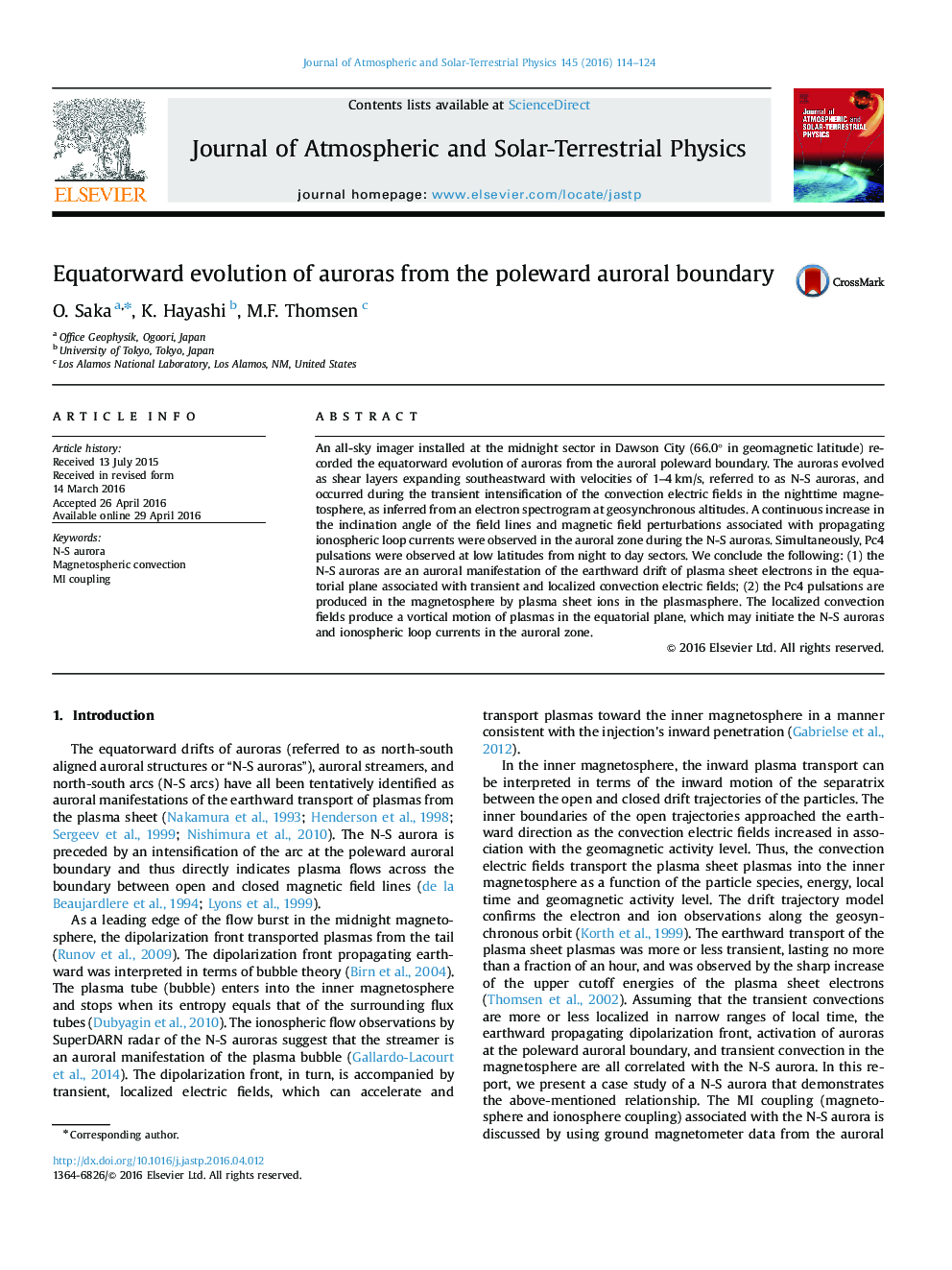| کد مقاله | کد نشریه | سال انتشار | مقاله انگلیسی | نسخه تمام متن |
|---|---|---|---|---|
| 1776227 | 1523602 | 2016 | 11 صفحه PDF | دانلود رایگان |
• N-S aurora is associated with convection transient in the magnetosphere.
• The convection transient is associated with local breakdown of the separatrix.
• The local breakdown acts as magnetospheric source of field-aligned currents.
• The MI coupling associated with the breakdown is discussed.
An all-sky imager installed at the midnight sector in Dawson City (66.0° in geomagnetic latitude) recorded the equatorward evolution of auroras from the auroral poleward boundary. The auroras evolved as shear layers expanding southeastward with velocities of 1–4 km/s, referred to as N-S auroras, and occurred during the transient intensification of the convection electric fields in the nighttime magnetosphere, as inferred from an electron spectrogram at geosynchronous altitudes. A continuous increase in the inclination angle of the field lines and magnetic field perturbations associated with propagating ionospheric loop currents were observed in the auroral zone during the N-S auroras. Simultaneously, Pc4 pulsations were observed at low latitudes from night to day sectors. We conclude the following: (1) the N-S auroras are an auroral manifestation of the earthward drift of plasma sheet electrons in the equatorial plane associated with transient and localized convection electric fields; (2) the Pc4 pulsations are produced in the magnetosphere by plasma sheet ions in the plasmasphere. The localized convection fields produce a vortical motion of plasmas in the equatorial plane, which may initiate the N-S auroras and ionospheric loop currents in the auroral zone.
Journal: Journal of Atmospheric and Solar-Terrestrial Physics - Volume 145, July 2016, Pages 114–124
